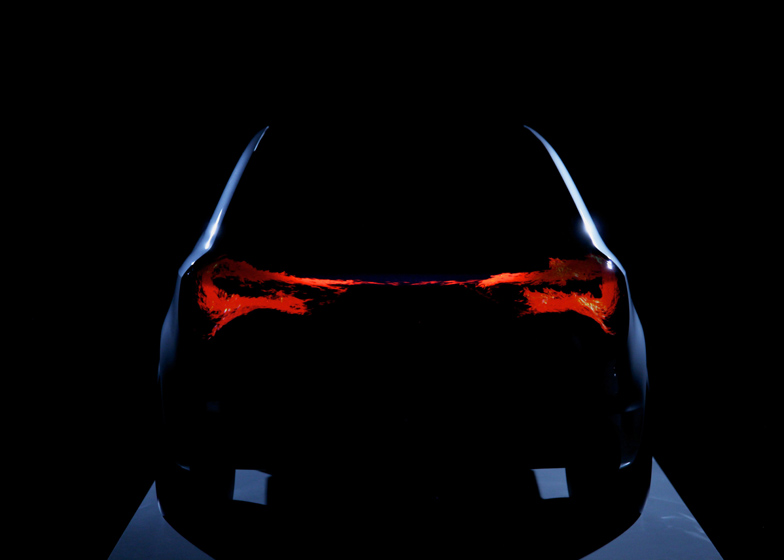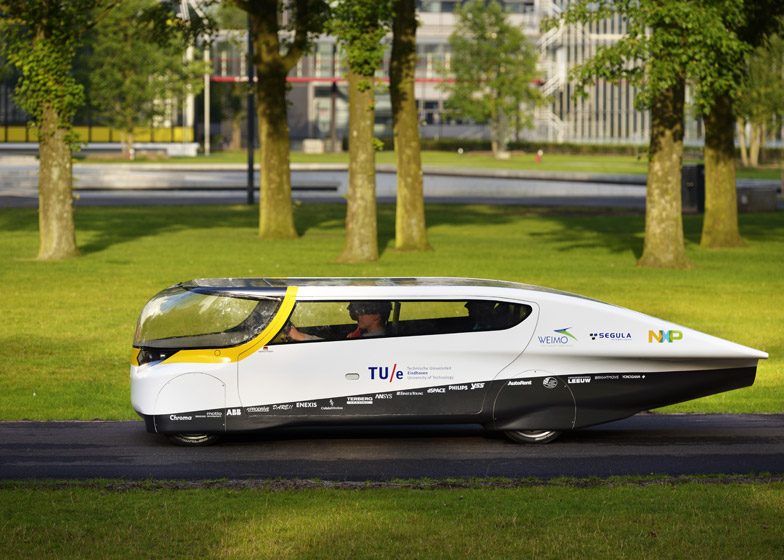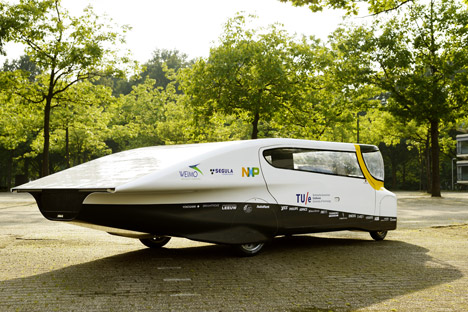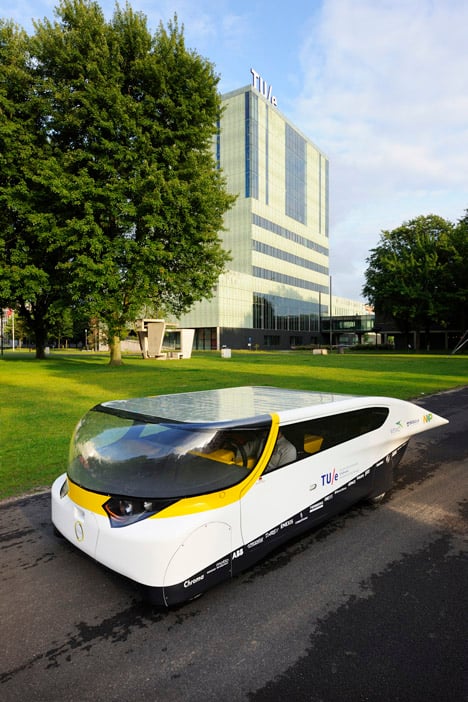A car that drives itself through traffic jams and does the parking for you was showcased alongside shape-shifting OLED headlights by German car brand Audi at this week's Consumer Electronics Show in Las Vegas.
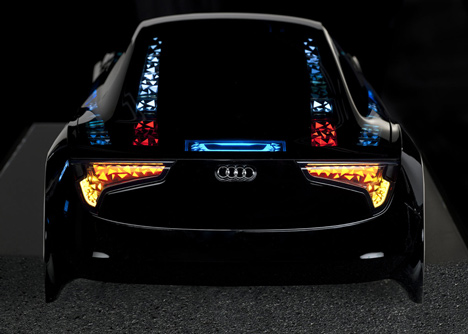
Above: banks of LED headlights and indicators
Audi also unveiled electronics systems to integrate the car with services such as Google Maps and Google Earth View as well as social networks like Facebook and Twitter.
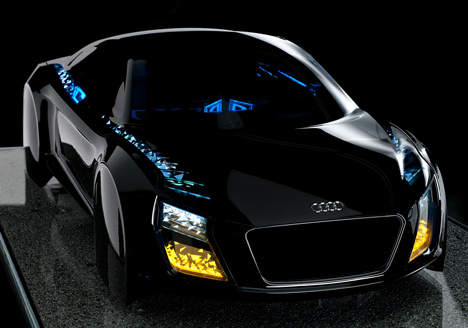
Piloted driving will soon allow drivers to let the car take control when stuck in a traffic jam, Audi engineers believe.
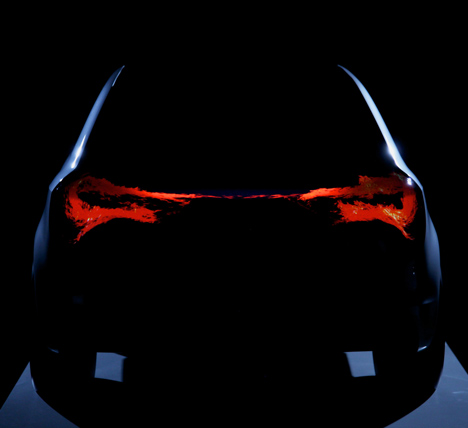
Above: OLED technology creates a continuous light surface
The self-driving technology will be able to stop and start the vehicle in slow-moving traffic, as well as manoeuvring it in and out of parking spaces.
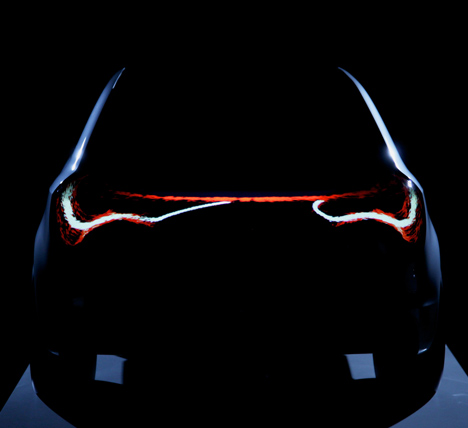
Cars could also be networked to alert each other to hazards such as icy roads or heavy traffic, Audi suggests, while communication with traffic lights would enable the vehicle to drive itself through green lights.
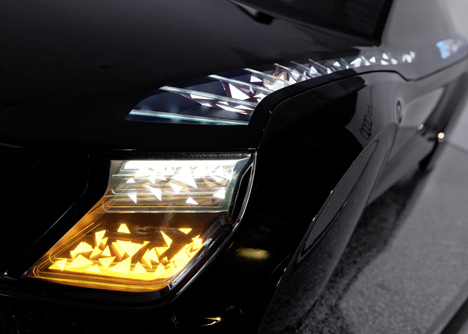
LED headlights are already available in many car models, but at CES 2013Audi unveiled its Matrix LED system, which uses a camera to detect the road and vehicles ahead so that it can swivel its headlights or lower the intensity of the beam when needed.
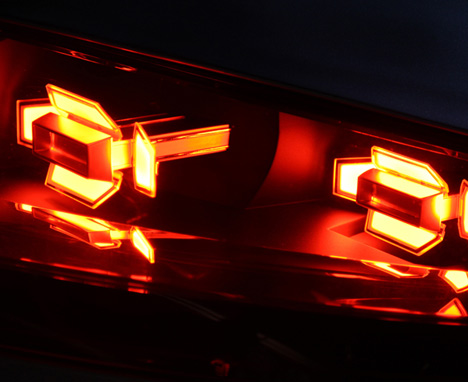
Above: LED headlights that can bend and swivel
OLED (organic light-emitting diode) technology would also turn the car's rear into a continuous light surface with many tiny points moving together like a shoal of fish. The lights would flow to the right when the car turns right or flow rapidly forwards when it brakes, for example.
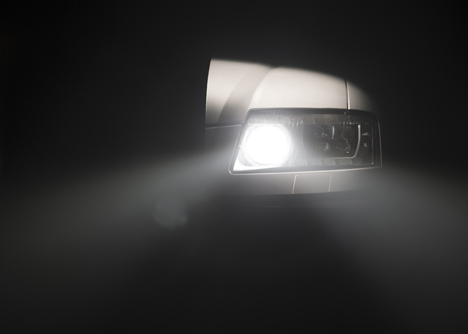
Last month Dezeen filmed a movie that showed how glowing walls, windows and furniture made from OLEDs could replace light bulbs and LEDs in homes.
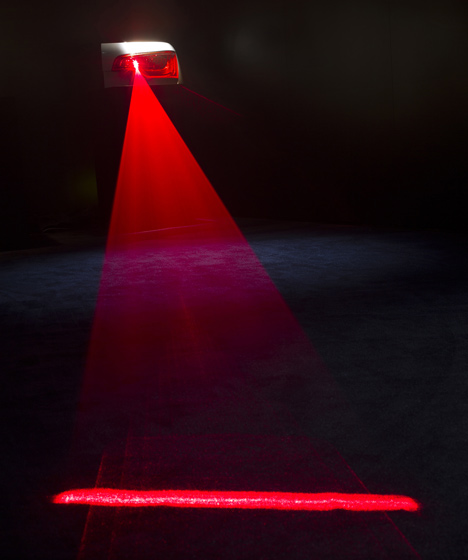
We also recently reported that Audi is bringing its interior and exterior design studios together as part of its new design strategy.
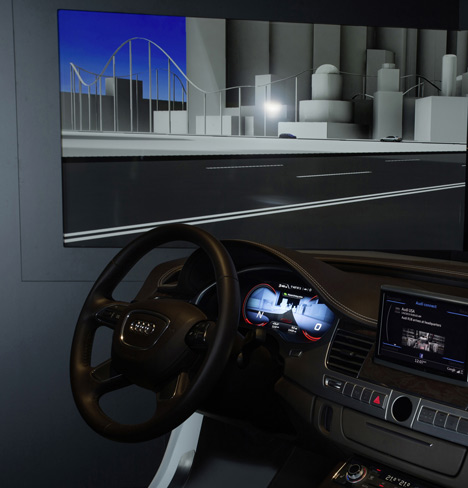
Above: a customisable virtual display
We've also featured an ultra-lightweight chair developed in collaboration with Audi and a huge sculpture created for the car brand at a motoring festival – see all our stories about Audi »
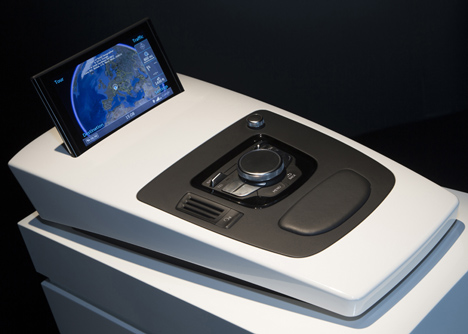
Above: smartphone integration for maps and satellite views
See all our stories about OLEDs »
See all our stories about cars »
See all our stories about transport »
See all our stories about cars »
See all our stories about transport »
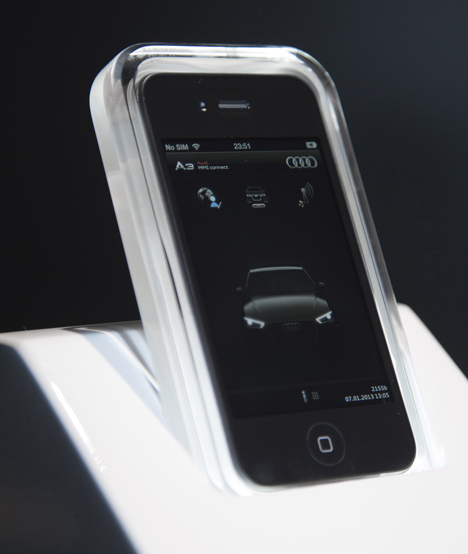
Above: smartphone integration
Here's more information from Audi:
Audi at the CES 2013
“Electronics trends over the next decade” will be the banner for Audi’s presence at the Consumer Electronics Show (CES), which will be held in Las Vegas from January 8 to 11, 2013. At the world’s most important electronics trade show, the brand is presenting its technologies of today and its solutions for tomorrow. The spotlight will be on networking the car with its environment – with a particular focus on future piloted driving and mobile communications.
Audi will be showcasing a wide range of assistance systems already on offer that make driving more comfortable and safer. These assistance systems are closely integrated, providing them with a high degree of intelligence and outstanding capabilities. Tomorrow’s systems will be even smarter – they will reduce the driver’s workload should the driver so wish.
Piloted driving will be technical feasible before the decade is out – Audi will be showcasing what being caught up in a traffic jam will entail in future. In congested traffic at speeds up to 60 km/h (37.28 mph), Audi’s piloted driving helps the driver to steer the car within certain limits. It also accelerates and brakes the vehicle autonomously. In future, piloted driving will also be able to maneuver the vehicle autonomously into and out of parking spaces – such as in tight roadside parking spaces, in garages, or even in parking garages.
“At Audi you’d be hard pushed to find an innovation that isn’t related to electronics nowadays,” explains Ricky Hudi, Head of Electrics/Electronics Development. “These enable us to implement full networking. A defining feature of the last decade was that we integrated all the functions in the car. This decade will see us network the car seamlessly with the environment, under the Audi connect banner – with the driver, the Internet, the infrastructure, and with other vehicles.”

Audi connect services and technologies bring the Internet into the car and the car onto the Internet. For customers the new technology means greater comfort and greater driving pleasure. The new wireless communication standard Long Term Evolution (LTE) will soon support communications with the World Wide Web, opening up the possibility of high-speed transmission of large amounts of data.

Audi connect services and technologies bring the Internet into the car and the car onto the Internet. For customers the new technology means greater comfort and greater driving pleasure. The new wireless communication standard Long Term Evolution (LTE) will soon support communications with the World Wide Web, opening up the possibility of high-speed transmission of large amounts of data.
Audi connect provides the driver with tailor-made services, ranging from navigation with Google Earth images and Google Maps Street View, through Audi online traffic information and social networks such as Facebook and Twitter. In the new Audi A3 and in the Audi A3 Sportback the driver can have e-mails read aloud and dictate (SMS) text messages. Audi intends to expand this range of services further.
Audi is working flat out on new operating and display concepts – concepts like the freely programmable instrument cluster. The driver can switch around the virtual displays to suit their own requirements. Visually they are barely distinguishable from the physical instruments, but provide much more flexibility.
The brand also has new technology for hi-fi aficionados – 3-D sound brings a three-dimensional, large acoustic stage to in-car music playback. This inspirational technology can be experienced in the “Audi Q7 sound concept” directly in the vehicle and on the booth.
The architecture of the modular infotainment platform enables for the first time hardware components to be kept constantly up to date with minimal effort.
For many years Audi has been a leading brand in terms of lighting technology - at present LED headlights are available in many model series. Electrics/electronics also pave the way for major development advances in this technology area. The lighting on tomorrow’s Audi models will react actively to environmental conditions, thus increasing active safety further.
Audi has developed a broad spectrum of expertise in all areas of vehicle electronics, thus enabling it to explore new ways of co-operating with its suppliers. As part of the Progressive Semi Conductor Program (PSCP) seven semiconductor manufacturers have acquired the status of strategic partners and are therefore integrated into development.
“In all our technical areas the innovation cycles are short, and the competition is cut-throat,” says Ricky Hudi, Head of Electrics/Electronics Development. “At Audi we see that as an obligation to become even more progressive, more agile, and more innovative.”
